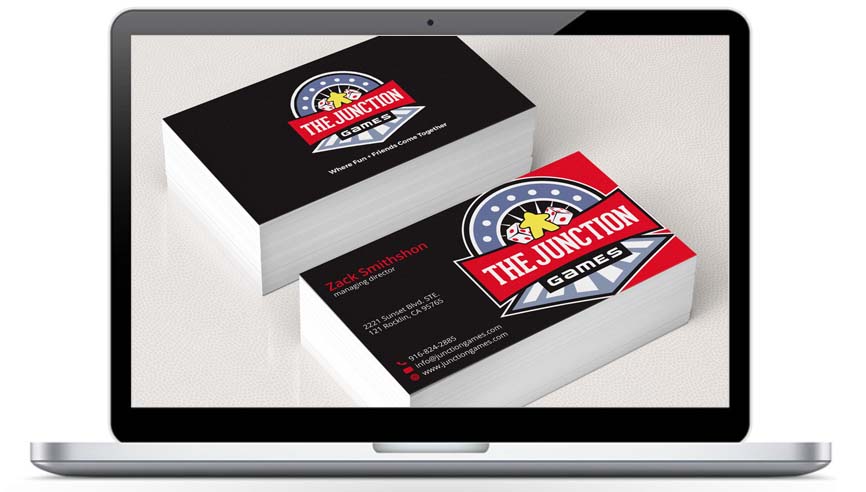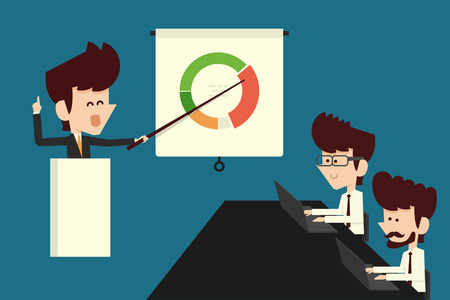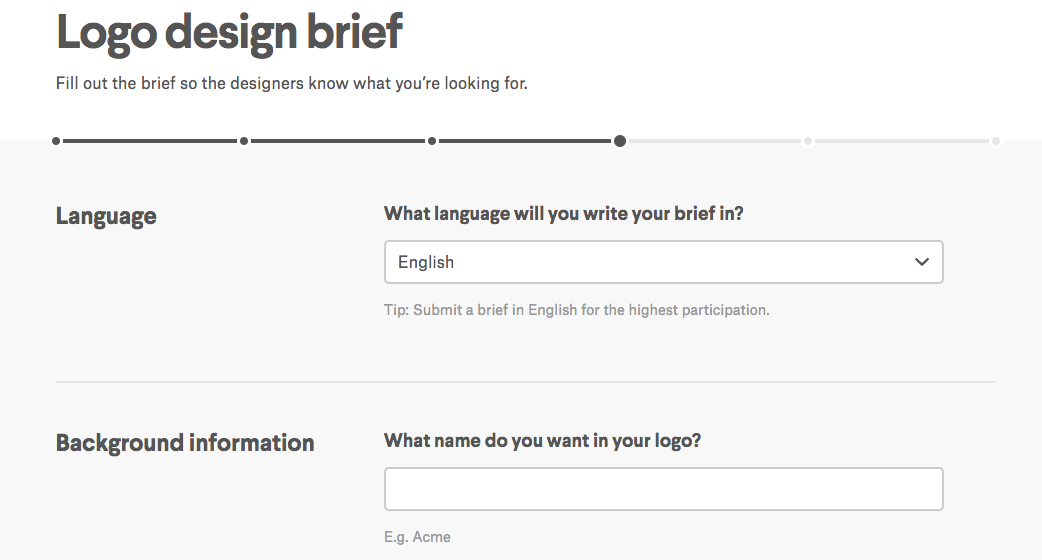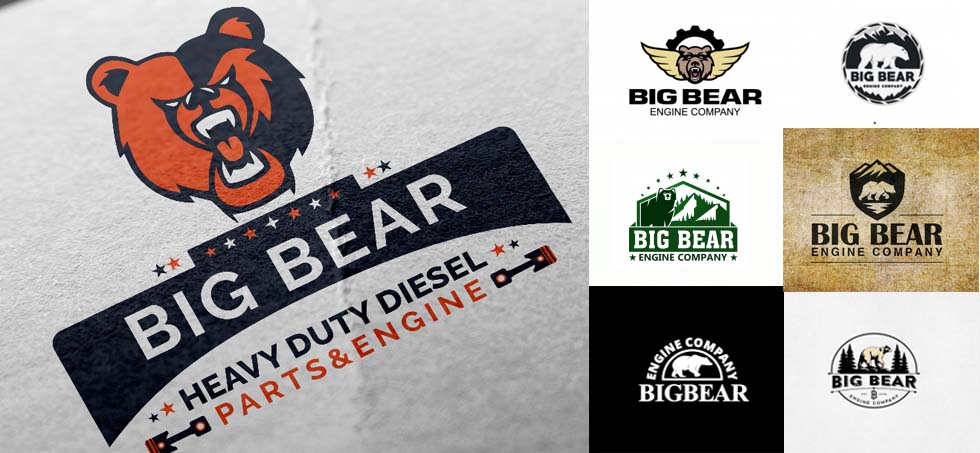
Getting a logo designed online: The top crowdsourced graphic design companies, explained and simplified.
TABLE OF CONTENTS
- INTRO
- COMPARE THE TOP DESIGN CONTEST PLATFORMS
- GETTING A LOGO DESIGNED ONLINE: THE OPTIONS AND WHY YOU’LL PROBABLY END UP RUNNING A DESIGN CONTEST
- THE LOGO DESIGN CONTEST PROCESS
- THE BIG BOYS. WHO THE TOP DESIGN CONTEST SITES ARE AND WHERE THEY CAME FROM
COMPARE THE TOP DESIGN CONTEST SITE
ONLINE LOGO DESIGN: THE TRIO OF OPTIONS
OPTION ONE: Hit a freelancer up.
Hiring a designer online to work one-on-one with them through a freelance marketplace is a decision that many make when choosing how to get their logo designed.
While many a project has been successfully completed over the web, the vetting process, language barrier, and lack of choice that most platforms that connect freelancers to clients provide leaves much to be desired. If you know or have a lead on a talented freelancer then you can certainly find some benefits to working one one-on-one as opposed to crowdsourcing a design. One of those is the degree to which you can fine-tune and adjust the brand.
One of the downsides to working one-on-one with a freelancer is that you only get their take on your brand. This can be exactly what you want if you’ve hired the designer because their portfolio blew you away, but if you just hired someone who self-identifies as a “designer” because they were in your price range, well, you’re probably going to be happier with the variety, the originality, and the sheer number of options that a logo design contest provides.
OPTION TWO: Hire Don Draper.
Another viable option is to go whole hog and hire a logo design firm online. There are a number of reputable design firms that conduct their business over the web, as well as a number of popup websites that claim to offer ridiculous numbers of concepts and end up passing off clipart as original artwork.
While usually fairly pricey, they can provide a high level of service sometimes found lacking in the crowdsourced model, although almost certainly always without the large number of options provided by design contests.
Most traditional design firms work in creative rounds of two to three concepts, with additional rounds being charged additionally.
Make sure to do your research if taking this route and make sure that the firm that you hire has a solid internet presence, has been around for a while, and can present an original client portfolio and solid testimonials.
Again, hire the firm because their portfolio contains the best logos that you’ve ever seen, not because their “design package” fits your budget, comes with stationery design and their design brief only took 3 minutes to fill out. That’s how you end up with a few mediocre design options and a lackluster end product.
OPTION THREE: Harness the power of the crowd. The Logo Design Contest.
Then there’s crowdsourcing. Crowdsourcing is a new catch-all buzz word to describe the phenomenon of people coming together in groups to work together creatively on one project. It’s a word that in the graphic design world has come to mean “design contests”.

Over the past 10 years, “Logo Design Contests” have become the de-facto method of getting a logo designed online, so much so that just about any ad you see online, and most of the top results in any search engine for logo design are going to be for a design contest platform.
A logo design contest is exactly what it sounds like: a contest where designers compete to win your approval by creating actual custom logos just for you. The one who designs the logo you like the best gets the cash that’s up for grabs, an amount you decide when setting up the contest.
Design contests can be controversial, there’s no doubt. The fact that multiple designers create actual designs for a client, and only one designer ends up having their design purchased angers some (mostly designers) who feel that it is unfair to expect someone to essentially end up working for free in the hopes of being compensated (speculative work).
Proponents of design contests respond, saying that contests give an opportunity for students to work on real projects, professional designers to relax and make some side income, and a regular source of income for many designers from developing nations. The average design contest usually provides around one hundred different logos to pick from and can be participated in by dozens of designers from all over the globe.
Small businesses and organizations that develop their logo by holding a design contest benefit from the sheer number of designs submitted to the average contest. The ability to rate and comment on designs as they come in allows the designers participating in the contest to rapidly adapt and redevelop their designs until they match the client’s vision.
THE LOGO DESIGN CONTEST PROCESS: IT MAY BE SIMPLE, BUT DON’T SET IT AND FORGET IT OR YOU’LL REGRET IT

While the concept of a logo design contest is not difficult to grasp, taking on the role of creative director is essentially what you do when you run a design contest.
Taking the time to write a thorough and useful design brief, giving honest, accurate, and helpful feedback to the designers, and making sure you’ve received the files you need for the final artwork are all vital parts of running a successful design contest.
Step #1
First, you create a contest listing on the design contest platform that you choose to go with.
The Design Brief is where you explain to the designers the kind of logo you are looking for and what your company does.
There is usually space for you to describe your ideas for the logo, some sliders for you to narrow down your design preferences, a couple of different styles of logos with checkboxes next to them…. you get the idea.
Unless you know exactly what you’re looking for, it’s best not to be too specific at the beginning of a contest to avoid entries getting pigeonholed, resulting in you ending up with only logos that match your exact criteria and none of the variety and creativity that make design contests such an innovative idea.
For example, instead of “I want my company name in a bold font with a globe for the letter ‘o’ and the rest of the letters deep blue” you would get a lot more creativity out of the designers with “I like blue and generally prefer bolder fonts, I’ve also tossed around the idea of having a globe replace the letter ‘o’ but I’m open to other ideas as well! Go crazy!”
Don’t be afraid, however, to describe in great detail what you don’t want to see in the entries: “No comic book style fonts, no orange, nothing that looks playful or unprofessional” would all be very useful information for the designers.
You also decide which logo design package is best for you. Despite the term “package” used by all four platforms, what you are selecting is usually the “prize amount” (what the winning designer gets) plus various and sundry fees the platform charges.
While crowdSPRING and Hatchwise detail what portion of the total cost of the package is the designer prize, 99designs and DesignCrowd do not. Because the amount of prize money on offer is what influences both the number of designs and the quality of the designers participating this is something important to take into consideration.
Step #2
Next, sit back and wait for the email notifications. Dozens of designers are going to create real, actual logos, just for you.
Yeah, you’re going to get a ton of logos to look at.
Anyone can submit to these things, so some are complete garbage, many look very generic, and some of them are actually pretty darn decent.
More important than your design brief, more important than how much you upgraded your contest, and almost more important than the prize amount, is the amount of participation that you put into your contest. Rate every design that comes in. Leave a comment on every design that you receive, even the ugly ones – especially the ugly ones, because being clear (in a polite way of course) about what it is that you don’t like is what ultimately leads to you receiving entries that you do.
As you leave feedback the designers will revise their entries, and other designers who join the contest will take your prior comments into consideration as they create their own designs. The logos entering the contest will slowly morph over time into ones that match your personal taste, even if you wouldn’t have been able to easily articulate your personal taste at the beginning of the project. It’s a cool thing to watch happen.
Throughout the time the contest runs you’ll review dozens of designs, interact with designers from all over the world, and see dozens of revisions, color options, and mockups – it’s an exhausting but exhilarating process.
In the end, hopefully – fingers crossed! – there’s one that you fall in love with.
Step #3
After you pick your favorite logo, the winning designer gets paid, and everyone else gets some experience and a portfolio piece. You get full ownership of the design, some sites have an actual form detailing the design handoff, and some sites have it built into their terms and conditions, regardless, with all the major platforms you generally get full rights to the design.
Usually, the only right that the designer/design contest site holds on to is to be allowed to display the logo/design contest for portfolio/marketing purposes. You can usually avoid having the design contest site use your logo in any public way by making sure to run a “private contest” (almost always a paid upgrade), but the designer will always be able to display it in their personal portfolio.

You will also receive the completed art files for the project. Make sure to look over them and make sure that you have received at a minimum either an .ai or .eps file (preferably both), as these are the editable source files that allow you to make changes down the road. You will also most likely get files with .png, .jpg, .gif and possibly .pdf file extensions.
Although all the major design platforms require that the completed art be delivered with all needed files it is generally up to you to make sure that the designer did in fact give you the correct files.
There is usually a lag time between the files being uploaded and the designer getting paid for the contest, so looking over the files and contacting the company asap if there are issues is important, this allows them to put a hold on the designer’s payment until you get the correct files.
All design contest sites are just the middlemen in the design process and assume no legal responsibility for either the originality or legality of any submitted design, so any copyright searches or trademarking are your responsibility. It is generally advisable to consult with an attorney specializing in trademark and copyright law before using any logo commercially regardless of where you get it from.
Once you’ve completed your design contest you can move on to getting some marketing collateral with your gorgeous new logo on it. If you love their design style and portfolio you can always hire the winning designer to do the work – most if not all of the big four sites provide the designer’s contact info once the project has concluded and several of them offer the ability to work one on one with designers directly on the site.
Alternatively, all the major crowdsourcing sites also offer design contests in just about every category, so if you want a business card, brochure, or postcard – you name it – you can run a design contest for it!
MEET THE BIG BOYS: HATCHWISE,
CROWDSPRING, 99DESIGNS & DESIGNCROWD:
This page focuses on the four original design contest platforms, 99designs, Hatchwise, crowdSPRING, and DesignCrowd.
While there have been other services offering design contests (many of which are based on a generic script with dubious claims as to both designer community size, client ratings, and client numbers, as well as “design contest” sites that rely heavily on using clipart to produce mass logos) before and since, these four pioneered the concept of design contests back when it was still a brand new concept, have all designed over a million logos each, and have been featured in major publications.
All four follow very similar methods for running design contests, and although there is some variation in process and interface in the end it boils down to the three steps outlined above.
MEET 99DESIGNS

In 2008, friendly forum design competitions grew into a unique design marketplace and 99designs was born. 99designs was created and bootstrapped by founders Mark Harbottle and Matt Mickiewicz with the support of Lachlan Donald and Paul Annesley.
One of the largest crowdsourcing communities online, 99designs is also one of the pricier design contest sites, the sheer size of their massive design community in many ways helps to make up for that. Generally, you can expect fewer designs for more money from 99designs, with a slightly slicker design and user interface than the competition.
MEET HATCHWISE

Founded in 2008 by serial entrepreneur George Ryan, Hatchwise is home to a tight-knit creative community and is a strong contender in the crowdsourcing arena: with over one million logos designed and an average of over one hundred entries per contest, Hatchwise holds strong in the design contest department in addition to offering name and tagline contests.
In 2010 INC Magazine ran an article featuring a “taste test” that ran design projects using four different online design services, Hatchwise included and 99designs included, Hatchwise was selected as the favorite and was named as providing the “highest caliber” designs.
Hatchwise is consistently the most affordable platform of the top four, and dollar for dollar provides more variety and quantity of designs in their higher-priced packages.
MEET CROWDSPRING

CrowdSPRING was co-founded in May 2007 by Ross Kimbarovsky and Michael Samson, although the online marketplace did not actually launch its marketplace until 2008, the same year that 99designs, DesignCrowd and Hatchwise launched.
When crowdSPRING first opened its doors the company and its business model dealt with the inevitable criticism of design contests by actively embracing and participating in the debate about the spec work business model.
crowdSPRING boasts a large designer community, and mid-range priced design packages, and also hosts writing contests.
MEET DESIGNCROWD
DesignCrowd was started in a garage in Sydney, Australia by Alec Lynch and Adam Arbolino and has grown to a community of over five hundred thousand designers.
DesignCrowd claims to use “Crowdsourcing 2.0” a “fairer, sustainable, higher quality crowdsourcing where every designer can get paid” with their cheapest package starting at $99 for 1-3 designs.






